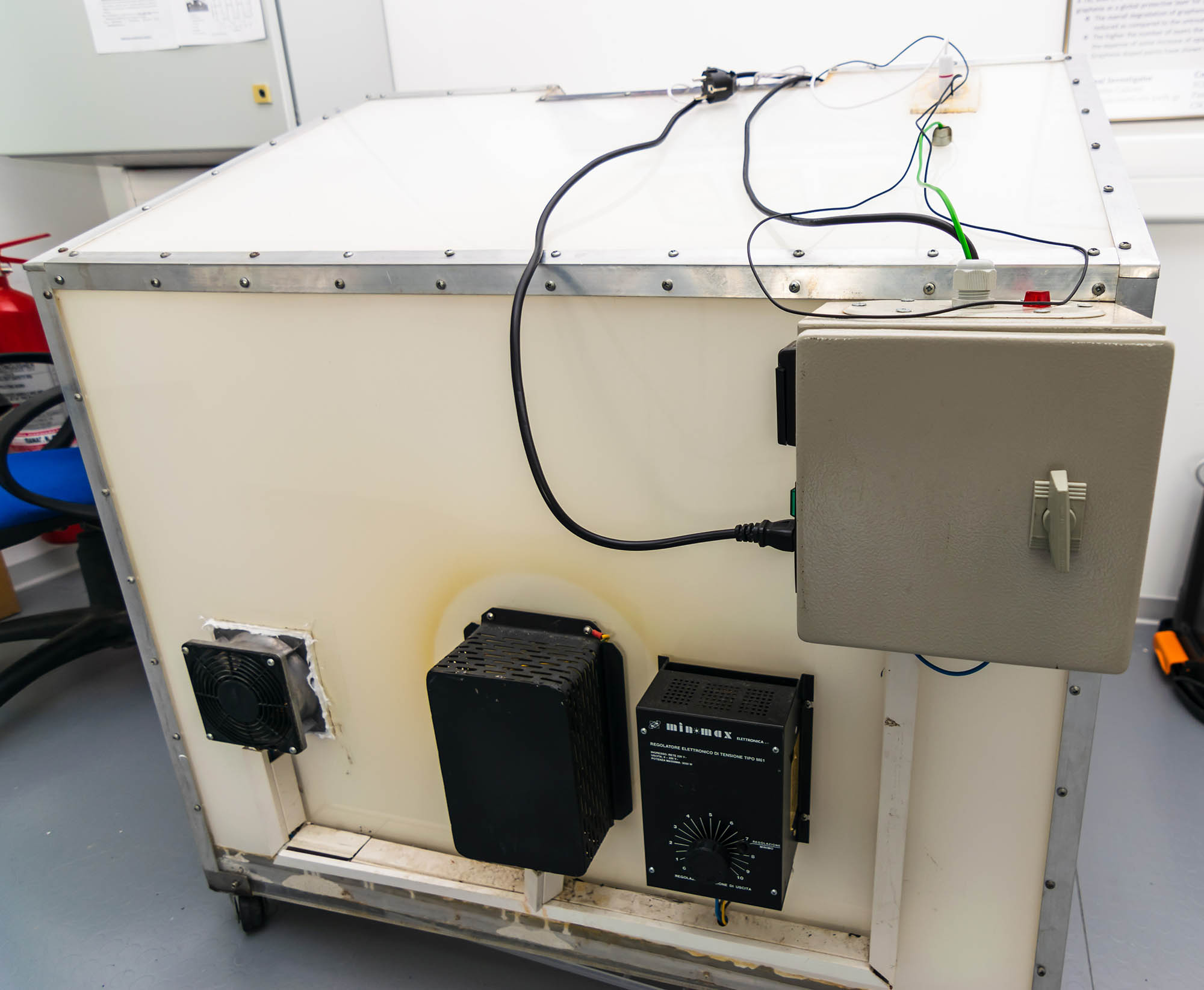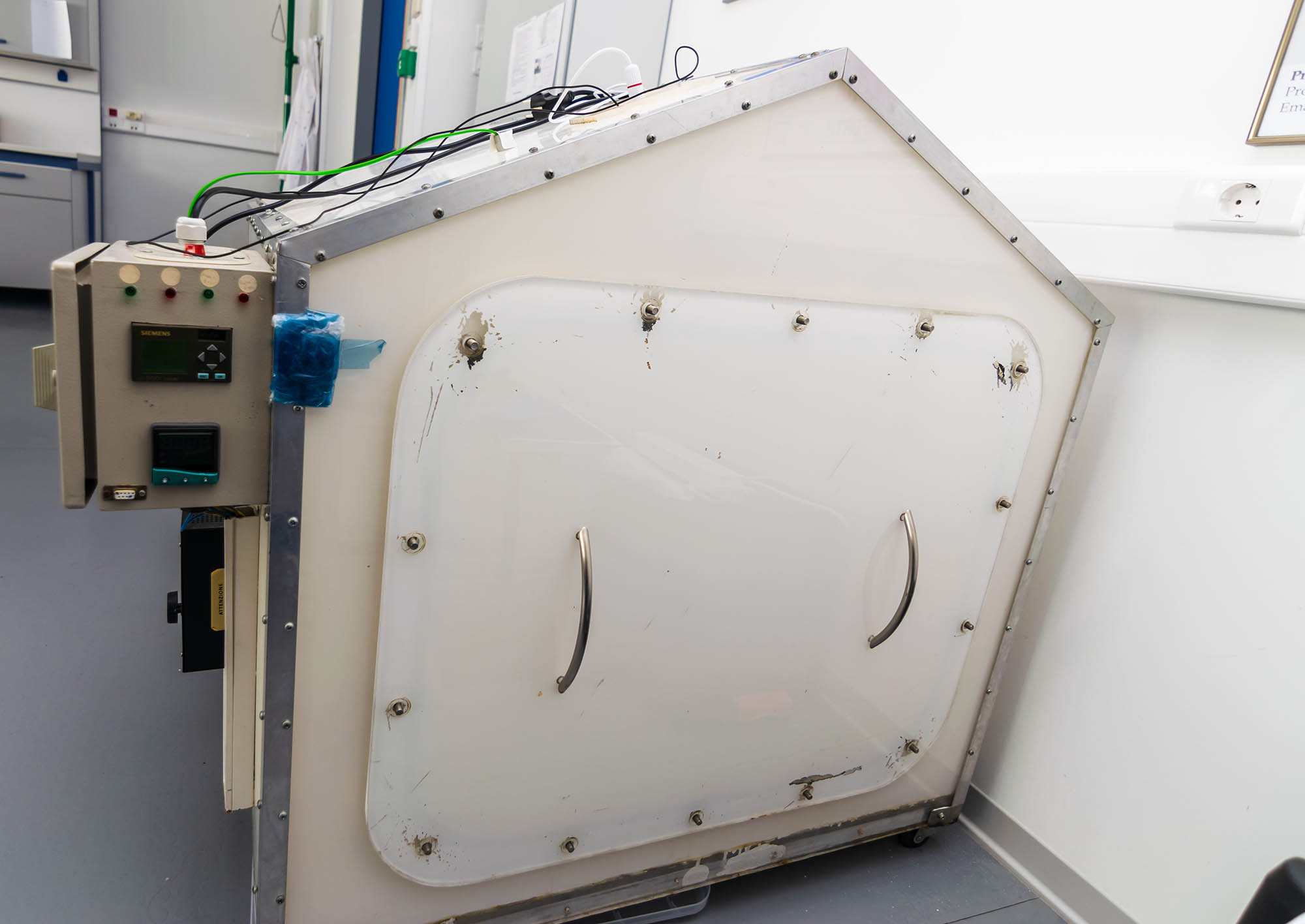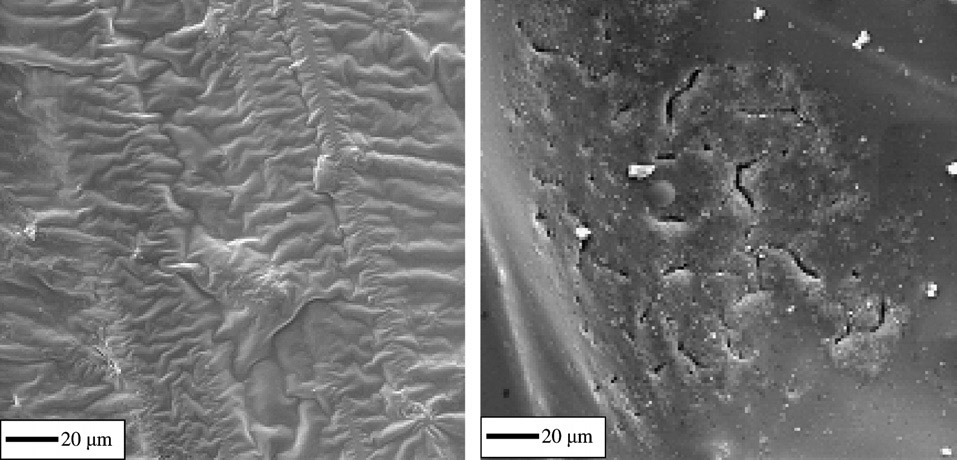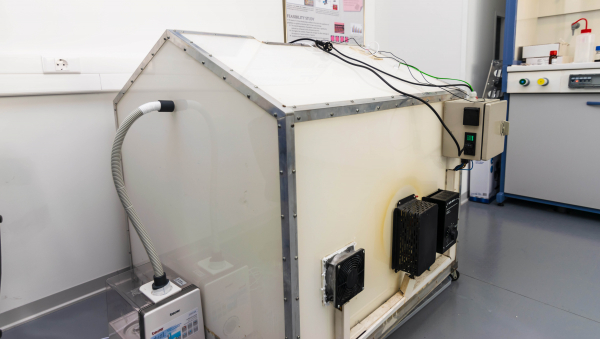The chamber walls are protected with a 2-component epoxy lacquer coating. The UV source is protectively positioned behind a quartz window on the outter top part of the chamber in a vertical direction to the specimens (simulating direct sunlight exposure).

The setup consists of:
• A UV lamp able to emit at 365nm (UVA), 302nm (UVB) and 254nm (UVC)
• A temperature controller on stainless heating resistance able to supply heat within 20-100oC
• A humidifier able to maintain 20-98% RH
• A Siemens LOGO! micro-automation programmable logic controller
• A temperature/relative humidity data logger (0.1°C, 0.1% RH resolution) with computer recording interphase
• An internal air stirring fan for homogenization of the chamber's environment
• A stainless steel mesh specimen rack
• Draining system

This chamber provides accelerated ageing by alternating cycles of temperature, humidity and UV radiation. Three ASTM standards were used as guidelines for the construction of the environmental chamber namely,
(a) ASTM D1151-90: standard test method for effect of moisture and temperature on adhesive bonds
(b) ASTMD5229/D5229M-92: standard test method for moisture absorption properties and equilibrium conditioning of polymer matrix composite materials, and
(c) ASTM G53-96: standard practice for operating light and water exposure apparatus (fluorescent UV-condensation type) for exposure of nonmetallic materials.

Example Process
STEP A: SPECIMEN PRECONDITIONING Specimens are stored at about 50% relative humidity conditions, at 23 0C without UV for 7 days.
STEP B: SPECIMEN MAIN AGEING PROCEDURE Specimens are subjected to alternating cycles of UV-B (302 nm) and condensation according to the following scheme: 4 h UV-B at 60 0C without condensation followed by 4 h condensation (98% RH) at 50 0C. This cycle is repeated for about 1008 h or 42 days (6 weeks).


